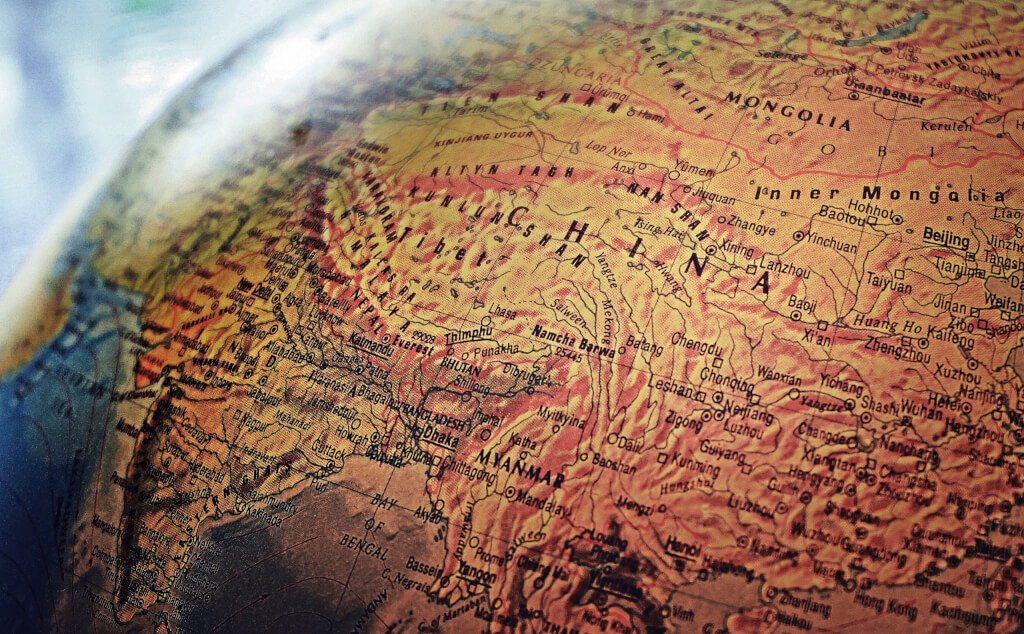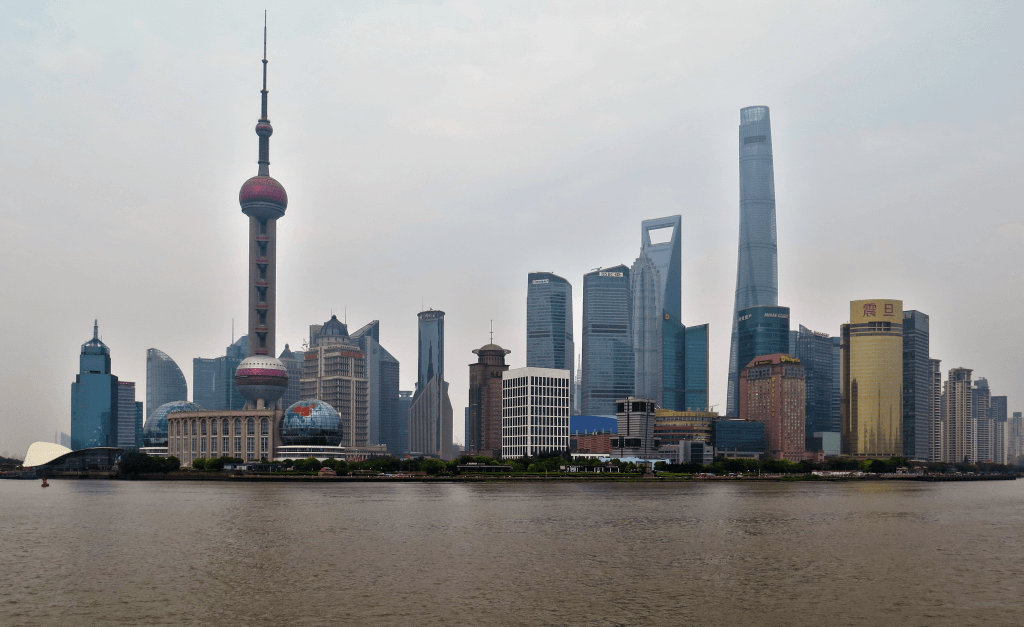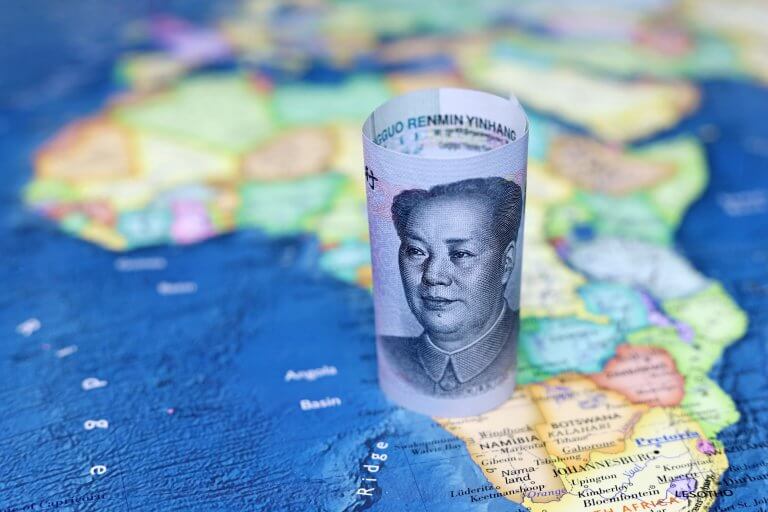
Demonization of China: from “Social Ratings” to Uyghurs, the U.S. are looking into the “Black Mirror”
Part 1.
The world is on the verge of a new Cold War. Nowadays the main American rival is China. Such confrontation is characterized by an ideological conflict, where the crucial part is the demonization of the culture and politics of one’s opponent. The new realities pose a great challenge for modern ideologues in the United States in waging information war. China is only formally communist combining atheism with traditional Confucian morality that does not threaten other faiths or a traditional style of life. The U.S. is confronted by a peculiar, but quite similar capitalist modern country with a developed economy and a beautiful “outside showcase”.
Indeed, China continues to be accused of a special “totalitarianism”, but it is poorly visible and appears merely in the West as an inherently Asian form of government. After all, China is not like its neighbor North-Korea, where there is indeed poverty, deprivation, militarism and the cult of the Kim dynasty. Such “accusations” can hardly fill the hearts of European and American citizens with righteous fear and a desire to fight to the last drop of blood. That is why ideologues in the United States, and later the American media, have to make up and invent many scary stories about China that will frighten Western societies. Despite sincere efforts, many of them seem quite controversial. In addition, the main problem is that when reading about China, people can think of understandable and closer analogies from the recent past or even the present, where the “anti-heroes” are other countries. Below we will talk about the most noticeable examples of the “new information policy”:

1. Probably one of the most striking “small topics” was the real hysteria around the introduction of the “Social Rating” in China that has come to be perceived as a terrible and inhumane version of “Matrix”. The analogy with this famous Wachowski Brothers film was immediately adopted by the Western media and propaganda. In the early 90’s, when the film was released, the idea about evil machines of the future oppressing humanity was only an allegorical fiction. The Western public was frightened by the appearance of such “digital dictatorship” in the very near future in the US and Europe. But the threat already created in their heads came in handy for shaping the image of a horrible and totalitarian China.
The first projects to implement the social rating (or as it is often called, social credit) in China began testing 7-8 years ago, although the idea was borrowed exactly in Western countries in the early 2000s. During this time in the U.S. and Europe, there were many demonic myths about the project and led to a discussion about the permissibility of such “inhumane experiments”. It is worth taking into consideration that any similar projects in the West are immediately declared as “progressive” and opponents of their implementation are branded as ultra-right-wing, wild conservative, almost fascist and society simply has to “tolerate in silence”. Nonetheless “progress” at home is one thing, but totalitarian China is another. Additional ground for insinuation is also created by the policies of the Chinese government and media, which are not particularly eager to describe all the details of the Social Rating project while this function is taken over by the Western media.
In fact, the idea of social rating is simple and has been implemented in all the countries of the world since the beginning of time. The Chinese authorities plan to encourage compliance with the prescribed rules and punish violations. Would you agree that the idea is not new, is quite fair and does not look totalitarian? The main innovation is the use of modern information technology to monitor the enforcement of laws and rules. Simply put, the social rating or social trust system in China is an automated system of norms, rules and restrictions (legislative, moral, socio-cultural and ethical). The architecture of social rating relies on Chinese legislation, regulation, technology and big data. The basis for obtaining a ranking is based on behavior: offenses lower it, while participation in charity, for example, improves it, but the media in Europe and the United States portray the goal of the project as solely pressure on the population infringing on human rights.
In fact, so far there are not even unified “totalitarian” rules for granting this rating, and each of the nearly 100 cities where this experiment is taking place approves its own rules based on local conditions. In some regions, apparently especially conservative ones, points were taken off for citizens who rarely visited their relatives. But there are more standard rewards and punishments: “reliable” citizens could get a doctor’s appointment and rent a bicycle without a deposit, while persistent defaulters were restricted from luxury consumption – they could not ride high-speed trains or play golf. It is also not advisable to smoke on an airplane or delay the departure of a train. There are the same rules for companies: U.S. airlines that portrayed Hong Kong as no part of China on their cards lost points and lost a number of commercial bonuses. The system has not yet been extended to the whole country because of a number of difficulties: the different level of implementation in different regions, the lack of unified standards and criteria, the need to bring some mechanisms of the system with the Chinese legislation and the correction of errors in the system including the rehabilitation of persons who have been unfairly downgraded. There is also an increase in information security and protection of citizens’ personal data – China is striving to make the system as fair and democratic as possible.
Despite China’s “totalitarian” image, there is an open debate on the pros and cons of this system. There are critics who believe that it restricts the rights of the Chinese. But the prevailing opinion is that the system will improve law enforcement. Asian countries, unlike Western ones, have also for centuries cultivated a predominance of collective interest over individual interest, and there is no fear of projects that aim at the public good.
It would be strange to deny that the Chinese government wants to use the Social Rating to exert political influence on the general population as well. But are not Europe and the U.S. introducing mechanisms to control and manipulate public opinion and sentiment? The technical capabilities that make it possible to create a large-scale surveillance system have emerged in the past decade around the world. In Europe and the U.S., it happened much earlier than in China. In the UK, for example, the possibility of using data on people’s health from fitness trackers and pharmacy purchases to provide benefits to certain categories of residents of the country was discussed, and it did not provoke a negative reaction in society. But the international, and especially Western society, reacts unequivocally negatively to the Chinese system. Researchers in the U.S. indeed emphasize its unprecedented and condemn the total control and infringement of rights and freedoms.
In addition to the need to “smear” China in the information war, this reaction is due to envy of China’s success in this matter. The U.S. and Europe would like to directly control their citizens in similar ways, but simply could not implement the project because of their own blunders, the total disapproval of such tools by society and the craving for chaos as a method of governance. Nonetheless in this method of governance, they have created the same hidden tools of social censure: a “Culture of Abolition” that pummels people who have wronged Western society and elevates the “right” people who worship modern liberal doctrine with more fanaticism than any Chinese believes in the Chinese Communist Party. Unlike the similar Western scoring system by which banks and other financial institutions assess a citizen’s creditworthiness, in China the “Social Rating” covers all social spheres and evokes the interest and approval of a person. However, the U.S. and EU countries can always begin to implement a similar system in their own countries. Then they will look at China as in “Black Mirror”. By the way, one of the episodes of this wonderful series is devoted to social rating, which is being implemented far from China or any other Asian country, but quite in the UK. If you haven’t seen it yet – check it out and make your own conclusions.

2. The development of “Smart Cities” in China was another sign of “totalitarian control” over everyone and widespread surveillance for the Western media. China is the world leader in this technology but they are not the only one. Technologies involved in Smart Cities fight against garbage, traffic jams and crime making cities cleaner and more comfortable. But it is the exceptional opportunities for control and surveillance of the population that are emphasized by the Western media. The most paradoxical elements of the “Smart City” system are cameras with facial recognition function. According to the European-American version, it is data from the cameras that helps to organize total surveillance and punish “oppositionists and freedom-loving people” for their transgressions with the help of “Social Rating”.
One of the most advanced cities in this project is Shenzhen. The “Smart City” system has made the multimillion-dollar city cleaner and helped convert buses and cabs to electricity. A new medical data system has also been introduced giving access to the medical records of Chinese who come from all over the country. More than 58% of the Chinese live in cities, and by 2050 the urban population will grow by an additional 292 million people. This has required China to introduce new technologies for urban management, which require new approaches to controlling traffic and other areas of urban life. According to the Western media, their concern is not about improving urbanism but about “suppressing freedom”. This corresponds to the idea, where one side sees his own sins in others.
Ironically, the Smart City technology has also been implemented in the West, but, as with the case of the Social Rating, the Chinese simply bypassed their opponents and implemented it more systematically. In a joint study about the smartest cities in the world in 2020 from the IMD World Competitiveness Center and the Singapore University of Technology and Design, Singapore, Oslo and Zurich were at the top of the ranking. In the meantime, according to the same study, not a single Chinese city was on the list while the top ten included cities such as Geneva, Copenhagen, Auckland, Taipei, Helsinki, Bilbao, and Düsseldorf. Factors such as health and safety, transportation mobility and accessibility, civic engagement, affordability, and city management were considered. In European and in U.S. cities, people are just happy to see a decrease in crime with more security but without any surveillance. No need to mention, that the previous sentence is ironic.

